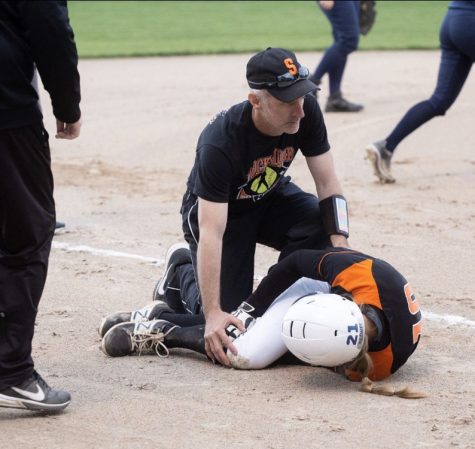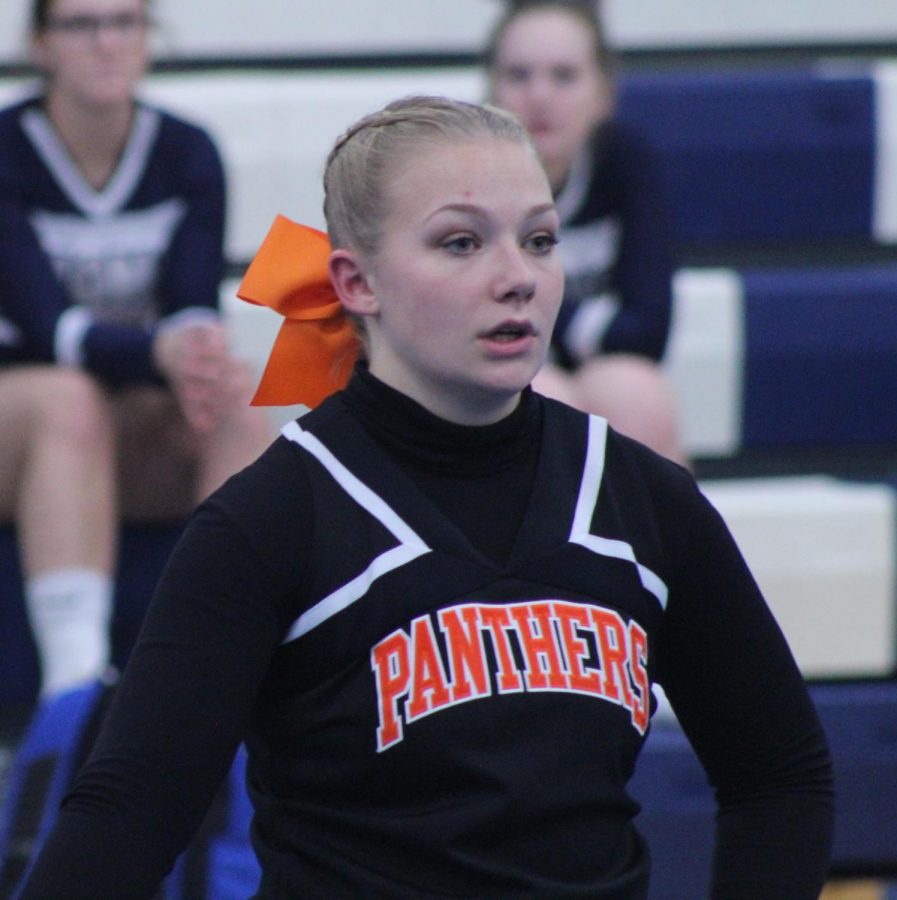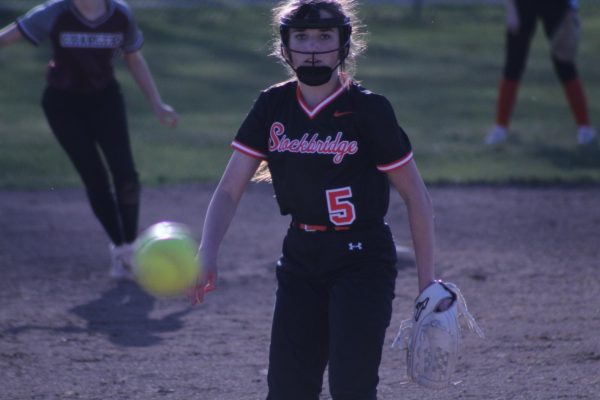Common among individual and team sports: injuries
Boys basketball: 2 injuries.
Competitive cheer: 1 injury.
Wrestling: 1 injury.
Bowling: 1 injury.
The numbers look good, but according to athletic director Meghan Kunzelman, winter sports injuries resulted in slight sprains all the way to concussions. No matter the sport, athletes need to stay on alert.
Senior Taylor Carey knows injury
It wasn’t five minutes into the game when senior Taylor Carey got a hit on the first at-bat. Fellow senior Emily Breslin was up next, and she smacked it to the outfield. Carey got to third, and then the opposing pitcher hurled her next pitch to senior Paige Wooden.
“Coach wanted me to steal home so that we could get on top and get our first run,” Carey said. “When the pitcher threw the ball, the catcher drop it, and I thought that it rolled past the catcher, so I went to steal.”
Carey thought that she had the chance to steal the base. Her plan did not go as planned.
“When I noticed the ball was right under the catcher’s feet, I stopped really fast and want to turn around to go back to third,” she said. “When I did, I heard the snap.”
When Carey’s knee snapped, she ended up at Michigan State University for an MRI. The doctors determined that she needed surgery on her ACL. After all of this, she had to be out for the remainder of the 2019 softball season and is still in recovery but getting better. She looks to the 2020 season to return.
Sophomore Kalysta Connolly knows practice can be as rough as meet play
Wrestling: A fun sport to watch. The thing is, wrestlers can get intense injuries. Even if the injury is small, it can affect how long a wrestler stays off the mat.
“This year, I got pulled out for a hamstring,” Kalysta Connolly, sophomore wrestler, said.
When the injury happened, Connolly was afraid that she would not be able to wrestle again. In the end, she was only out for a week and got back on the mat to wrestle again.
The injury happened during practice with freshman Ashton James because James was doing a move that he was not ready for so instead of asking the coach questions he accidentally injured Kalysta.
“We incorporate roughly 15 minutes of stretching and warm-ups before we go into our drilling of moves,” coach Brian Connolly said. “Along with stretching, we incorporate extensive drilling to be able to perform moves properly.”
Good form prevents injury.
“If a move is not executed properly the athlete will have a higher chance of injury,” coach Connolly said, exhibiting that while wrestling can be a dangerous sport, under the right surveillance the players should be able to have fun, wrestle and prevent injuries.
“Wrestlers have an injury rate of 2.33 injuries per 1,000 athlete-exposures,” according to Justin Saginaw, MPT, ATC.
Cheer choreographed to keep injuries low
There are multiple ways to get hurt in competitive cheer according to UPMC Sports Medicine. The most common injuries are muscle strains in the hip, lower back and legs; ligament sprains in the knees and ankles, according to UPMC.
According to pediatrician Dustin Currie, “Although, concussions were the most common cheerleading injury (31.1% of injuries), concussion rates were significantly lower from 2009 to 2014 cheerleading (2.21 per 10,000 athlete-exposures) than all other sports combined.”
There has been much conversation about the risk of injury in competitive cheer, particularly for flyers. The season stats show that cheer is actually low on injury tallies reporte

d to our trainer.
“We have multiple spotters, but sometimes you can’t prevent it,” senior captain Haylie Steinkraus said. “I dislocated my finger and two people had an ankle injury.” Even with spotters, flyers still are prone to injury.
Senior Tyler Gipson, ambidextrous competitor
“It is both because you can go out on a Friday night w
ith your friends and go bowl a couple of games” that the game is fun thinks sophomore Alexandria Teachout. “But when you’re going into the competitive part you have to be focused.”
In either situation, a bowler can get injured, but in competitive, the risk is higher to experience rotator cuff tears, knee meniscus tearing and low back pain.
The injury that senior captain Tyler Gipson incurred was a popped vein when he was bowling in the biggest competition of the season. The vein was on his right arm and this all happened at Flat Rock Lanes in southeastern Michigan.
“For bowling meets like Regionals, once you’re in it, your in it,” Gipson said. “So I had to bowl left-handed.”
When a basketball guard sinks his teeth into the game
During basketball practice, senior guard Chris Hall broke his tooth. He couldn’t play because the tooth wouldn’t fall out.
Hall had to sit out a couple of games until he could get a replacement tooth to play.
Situations like these are when athletic trainer Lance Letourneau comes in.
“The trainer [would] check them out and assess what the injury was” senior John Morris said. “If it was to severe injury they would probably have them sit out.”
While Hall’s injury was extraordinary, players can normally prevent getting injured by stretching and warming up before practice or a big game.“Warm-up techniques are primarily used to increase body temperature and are classified into three major categories: passive warm-up, general warm-up, and specific warm-up according to the National Center for Biotechnology Information at the U.S. National Library of Medicine. “The best of these appears to be specific warm-up because this method provides a rehearsal of the activity or event.”





